Looking for the best orthopedic mattress can feel overwhelming with so many options available. These specialized mattresses are designed to provide optimal support for your spine and joints while you sleep.
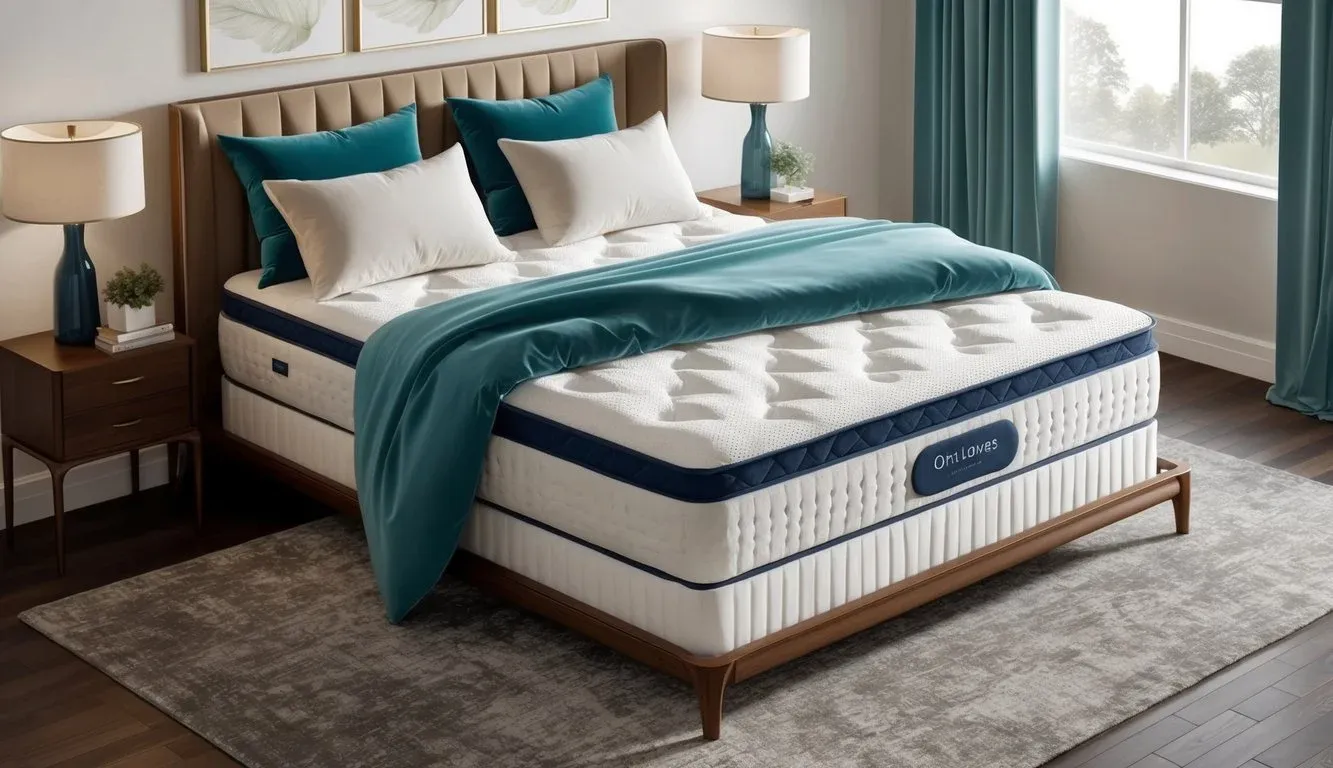
An orthopedic mattress offers superior support by properly aligning your spine and distributing body weight evenly, which can reduce back pain and improve sleep quality. Most quality orthopedic mattresses combine supportive materials like high-density foam or pocketed coils with comfort layers that contour to your body.
Finding the right balance of support and comfort is essential when choosing an orthopedic mattress. The best options typically feature medium-firm to firm support levels, durable materials, and technologies specifically designed to promote proper sleeping posture regardless of sleeping position.
Understanding Orthopedic Mattresses
Orthopedic mattresses are specially designed to support the joints, back, and overall body structure while you sleep. They focus on proper spinal alignment and pressure point relief to help reduce pain and improve sleep quality.
What is an Orthopedic Mattress?
An orthopedic mattress is specifically engineered to provide targeted support to your musculoskeletal system. These mattresses typically feature firmer support than standard options, though they vary in firmness levels.
Most orthopedic mattresses use materials like memory foam, latex, or specialized pocket coils. These materials work together to distribute body weight evenly and maintain proper spinal alignment throughout the night.
The key feature of orthopedic mattresses is their ability to contour to the body’s natural curves. This helps prevent the spine from bending unnaturally during sleep.
Unlike regular mattresses, orthopedic options are built with specific zones that offer different levels of support for various body parts. The shoulders and hips receive softer support, while the lower back gets firmer support.
Benefits of Orthopedic Mattresses for Health
Orthopedic mattresses provide significant relief for people suffering from back pain. By maintaining proper spinal alignment, they help reduce strain on the back muscles and vertebrae.
These mattresses excel at pressure relief, especially around sensitive areas like hips and shoulders. This makes them ideal for side sleepers and those with joint pain.
People with chronic conditions like arthritis often report reduced morning stiffness after switching to orthopedic mattresses. The even support helps minimize inflammation and discomfort during sleep.
Better blood circulation is another benefit. By reducing pressure points, orthopedic mattresses help maintain healthy blood flow throughout the body during rest.
Many users experience improved sleep quality with fewer disruptions. Less tossing and turning means deeper, more restorative sleep patterns.
Factors to Consider When Choosing an Orthopedic Mattress
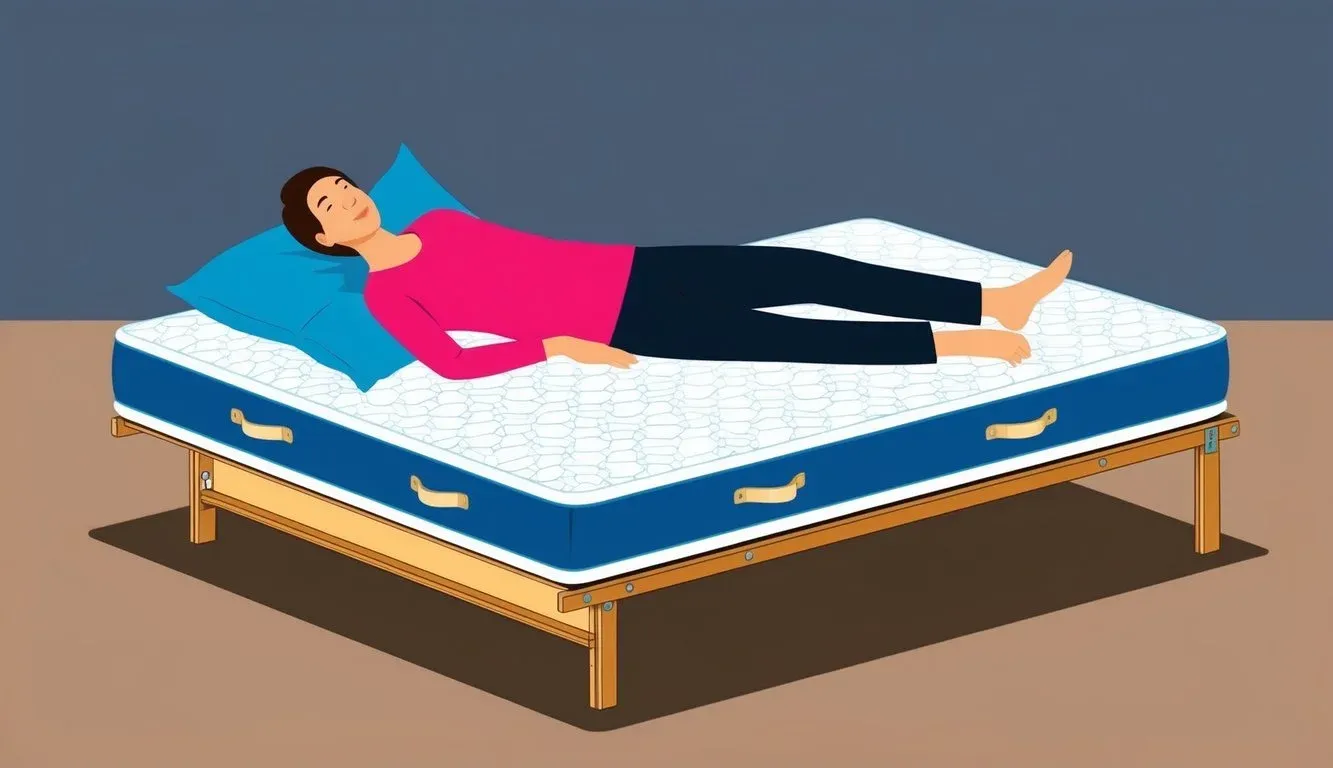
Finding the right orthopedic mattress involves evaluating several key elements that directly impact your sleep quality and spinal health. Your ideal mattress will depend on your specific body needs, sleeping habits, and personal preferences.
Firmness Levels and Sleeping Positions
Mattress firmness plays a crucial role in proper spinal alignment. On a scale of 1-10, most orthopedic mattresses fall between 5-8, with 10 being the firmest.
Side sleepers typically need medium-soft to medium mattresses (4-6 firmness) that allow shoulders and hips to sink slightly while supporting the waist.
Back sleepers benefit from medium-firm to firm options (6-8 firmness) that maintain the natural curve of the spine without excessive sinking.
Stomach sleepers require firm mattresses (7-9 firmness) to prevent the midsection from sinking too deeply, which can strain the spine.
People with higher body weight may need firmer mattresses, while lighter individuals often find comfort in softer options.
Material Quality and Mattress Types
Different mattress materials offer varying benefits for orthopedic support:
Memory Foam Mattresses
- Contour precisely to body shape
- Excellent pressure relief
- May retain heat (though cooling technologies exist)
- Minimal motion transfer
Latex Mattresses
- Naturally responsive and buoyant
- Good temperature regulation
- More bounce than memory foam
- Typically more durable and environmentally friendly
Innerspring Mattresses
- Better airflow and cooling
- Responsive support
- May transfer more motion
- Often less contouring than foam options
Hybrid Mattresses
- Combine coil support with foam or latex comfort layers
- Balance of contouring and responsiveness
- Better temperature regulation than all-foam designs
- Good option for those who want pressure relief with bounce
Pressure Points and Contouring
Quality orthopedic mattresses distribute body weight evenly to reduce pressure on sensitive areas. This feature is particularly important for those with joint pain or arthritis.
Contouring refers to how well a mattress adapts to your body’s shape. Deeper contouring (like memory foam) works well for side sleepers and people with sharp pressure points.
Moderate contouring suits back sleepers who need support while maintaining some give for the shoulders and hips.
Look for mattresses with targeted support zones that provide firmer support under heavier body parts like the hips and softer support for lighter areas like the shoulders.
People with specific pain issues should consider how different materials react to their problem areas. Memory foam often excels for hip and shoulder pain, while latex can work better for lower back support.
Sleeping Position Specifics
Your primary sleeping position dramatically affects which orthopedic mattress will serve you best.
Side sleeping creates pressure at the shoulders and hips. Look for:
- Softer comfort layers (at least 2-3 inches)
- Good pressure relief
- Proper support beneath comfort layers
- Medium to medium-soft firmness
Back sleeping requires balanced support. Prioritize:
- Even weight distribution
- Lumbar support
- Minimal sinkage at the hips
- Medium to medium-firm firmness
Stomach sleeping needs adequate support to prevent arching. Seek:
- Firmer surfaces
- Minimal pillow-top cushioning
- Strong core support
- Medium-firm to firm mattresses
Combination sleepers who change positions should consider responsive materials like latex or hybrid designs that make movement easier throughout the night.
Durability and Warranty Considerations
Orthopedic mattresses represent a significant investment in your health, making durability and warranty terms important factors.
High-density foams (4+ pcf for memory foam, 5+ pcf for polyfoam) last significantly longer than lower-density alternatives. For latex, look for 100% natural latex rather than synthetic or blended options.
A quality orthopedic mattress should last 7-10 years. Verify the warranty covers sagging beyond a reasonable depth (typically 1-1.5 inches).
Read warranty terms carefully, noting:
- Coverage period
- What defects are covered
- Whether proportional coverage decreases over time
- If the warranty is voided by using the wrong foundation
Many reputable companies offer sleep trials ranging from 90-365 days, allowing you to test the mattress in your home. This trial period is valuable since your body may take 30+ days to adjust to a new sleeping surface.
Best Orthopedic Mattresses – Our Top Recommendations
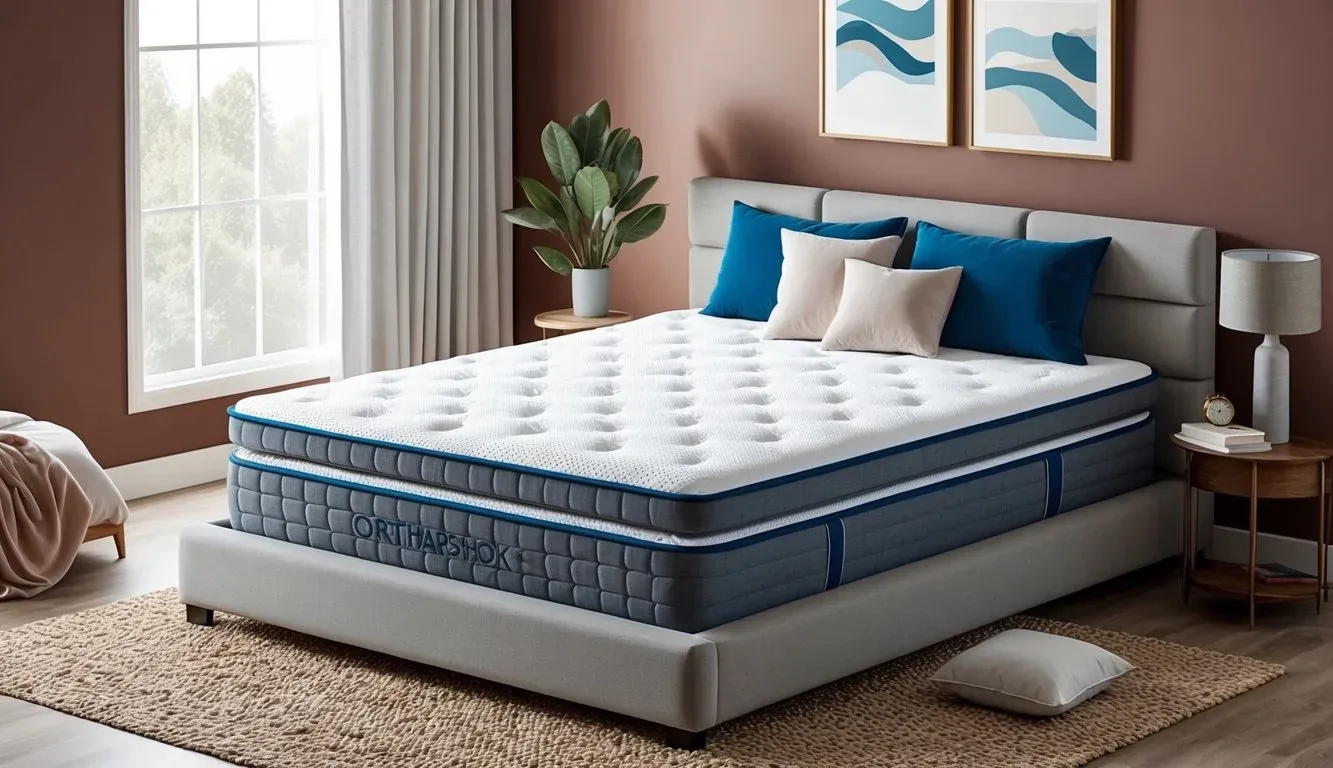
Finding the right orthopedic mattress can significantly improve sleep quality and reduce pain. The best models offer targeted support, pressure relief, and proper spinal alignment for different sleep positions and health needs.
Best Overall Orthopedic Mattress
The Saatva Classic stands out as the top overall orthopedic mattress with its patented “Lumbar Zone” technology. This mattress features a dual-coil design with a reinforced middle section specifically engineered for proper spinal alignment.
Its 3-inch Euro pillow top provides cushioning comfort while maintaining the supportive structure underneath. Available in three firmness levels (Plush Soft, Luxury Firm, and Firm), it accommodates various preferences.
The Luxury Firm option works well for most sleepers, offering a balance of support and comfort. Saatva’s mattress includes:
- Organic cotton cover for breathability
- CertiPUR-US certified foams
- 15-year warranty and 180-night trial
- Free white glove delivery and setup
Price range: $1,295-$2,790 (Queen: $1,795)
Best for Side Sleepers
The Helix Midnight Luxe excels for side sleepers who need extra pressure relief at the shoulders and hips. Its medium firmness (5-6/10) provides the perfect balance of cushioning and support.
The mattress features zoned lumbar support with softer areas under shoulders and firmer support for the lower back. This design prevents the midsection from sinking too deeply.
The plush pillow top contains memory foam that contours to the body, relieving pressure points common in side sleeping. Its cooling technology helps hot sleepers stay comfortable.
Key features include:
- Zoned support coils for targeted relief
- Memory foam comfort layers
- Optional cooling cover upgrade
- 15-year warranty
- 100-night trial period
Price range: $1,099-$2,349 (Queen: $1,899)
Best for Back Pain
The WinkBed offers exceptional support for those suffering from back pain. Its unique three-zone pocketed coil system provides enhanced lumbar support where it’s needed most.
The mattress combines a Euro pillow top with gel-infused foam to relieve pressure while maintaining spinal alignment. Its “Extra-Edge” support system prevents sagging along the perimeter.
WinkBed offers four firmness options, with the Luxury Firm (6.5/10) most recommended for back pain sufferers. The coil-on-coil construction promotes airflow, keeping sleepers cool.
Benefits for back pain include:
- Targeted lumbar support zone
- Motion isolation technology
- Tencel cover for moisture-wicking
- Lifetime warranty
- 120-night sleep trial
Price range: $1,149-$2,049 (Queen: $1,799)
Best for Stomach Sleepers
The Bear Elite Hybrid provides the firmer support stomach sleepers need to prevent lower back arching. Its 8-inch pocketed coils deliver robust support while copper-infused memory foam adds cooling comfort.
The mattress features zoned support that’s firmer in the hip area and softer at the shoulders. This design keeps the spine properly aligned in the prone position.
The breathable Celliant cover promotes recovery and improves circulation for active individuals. Its edge support is excellent for those who spread out while sleeping.
Stomach sleepers will appreciate:
- Firm, responsive surface (7.5/10 firmness)
- Minimal sinkage for hip alignment
- Cooling technologies
- 120-night trial
- Lifetime warranty
Price range: $1,299-$2,349 (Queen: $1,899)
Highly Rated by Customer Reviews
The DreamCloud Premier consistently earns high marks from customers for its balance of comfort and support. This hybrid mattress features a luxurious cashmere blend cover and euro top with gel memory foam.
Users praise its medium-firm feel (6.5/10) that works for various sleep positions. The individually wrapped coils minimize motion transfer, making it an excellent choice for couples.
Reviews frequently mention improved sleep quality and reduced pain. The mattress maintains its shape and support even after years of use.
Customer satisfaction highlights:
- 4.8/5 average review rating
- 365-night home trial
- Lifetime warranty
- Free shipping and returns
- Financing options available
Price range: $799-$1,599 (Queen: $1,199)
Special Considerations for Specific Needs
Different health conditions and lifestyles require specific mattress features to ensure proper support and pain relief. The right orthopedic mattress can make a significant difference in managing existing conditions and preventing new problems.
Addressing Sleep Disorders and Chronic Conditions
Orthopedic mattresses can help manage several painful conditions through proper spinal alignment and pressure relief. For arthritis sufferers, mattresses with responsive foam layers reduce joint pressure while providing crucial support.
Those with chronic back pain benefit from medium-firm to firm mattresses that prevent excessive sinking. The ideal firmness depends on sleep position and body weight.
People with sciatica need mattresses that reduce pressure on the sciatic nerve. Models with zoned support systems target the lower back and hip areas where this pain often originates.
For herniated disc patients, the best options maintain neutral spine alignment while cushioning sensitive areas. Memory foam and latex hybrids often work well by combining support with gentle contouring.
People with scoliosis should look for mattresses with reinforced support in the center third to accommodate the spine’s irregular curvature.
Orthopedic Mattresses for Athletes
Athletes require mattresses that facilitate muscle recovery and spinal alignment. High-performance orthopedic mattresses help repair muscle tissue during sleep through proper body positioning.
Medium-firm mattresses with cooling technology work best for most athletes. These prevent overheating while maintaining support for muscle recovery.
Materials like copper-infused memory foam offer both cooling properties and improved circulation to aid recovery. Some advanced models include zoned support that targets key pressure points athletes commonly experience.
Recovery time can be reduced with the right sleeping surface. Athletes with specific injuries should prioritize pressure relief in those areas while maintaining overall support elsewhere.
Look for responsive materials that adjust quickly to movement. This feature helps active sleepers maintain proper alignment throughout the night even when changing positions.
Choosing the Right Mattress for Aging Joints
As we age, joints become more sensitive and require additional cushioning and support. Medium to medium-soft orthopedic mattresses often work best for seniors by balancing support with pressure relief.
Materials like memory foam contour to aging bodies without creating painful pressure points. Many seniors benefit from mattresses with reinforced edge support for easier bed entry and exit.
Mattresses with motion isolation help couples sleep undisturbed when one partner moves frequently. This feature becomes increasingly important as sleep becomes lighter with age.
Temperature regulation is crucial for older adults. Look for breathable materials like gel-infused foams or natural latex that prevent overheating.
Adjustable bases pair well with compatible orthopedic mattresses, allowing position changes that can reduce pressure on specific areas like shoulders, hips, and knees when arthritis flares up.
Additional Mattress Features and Technologies
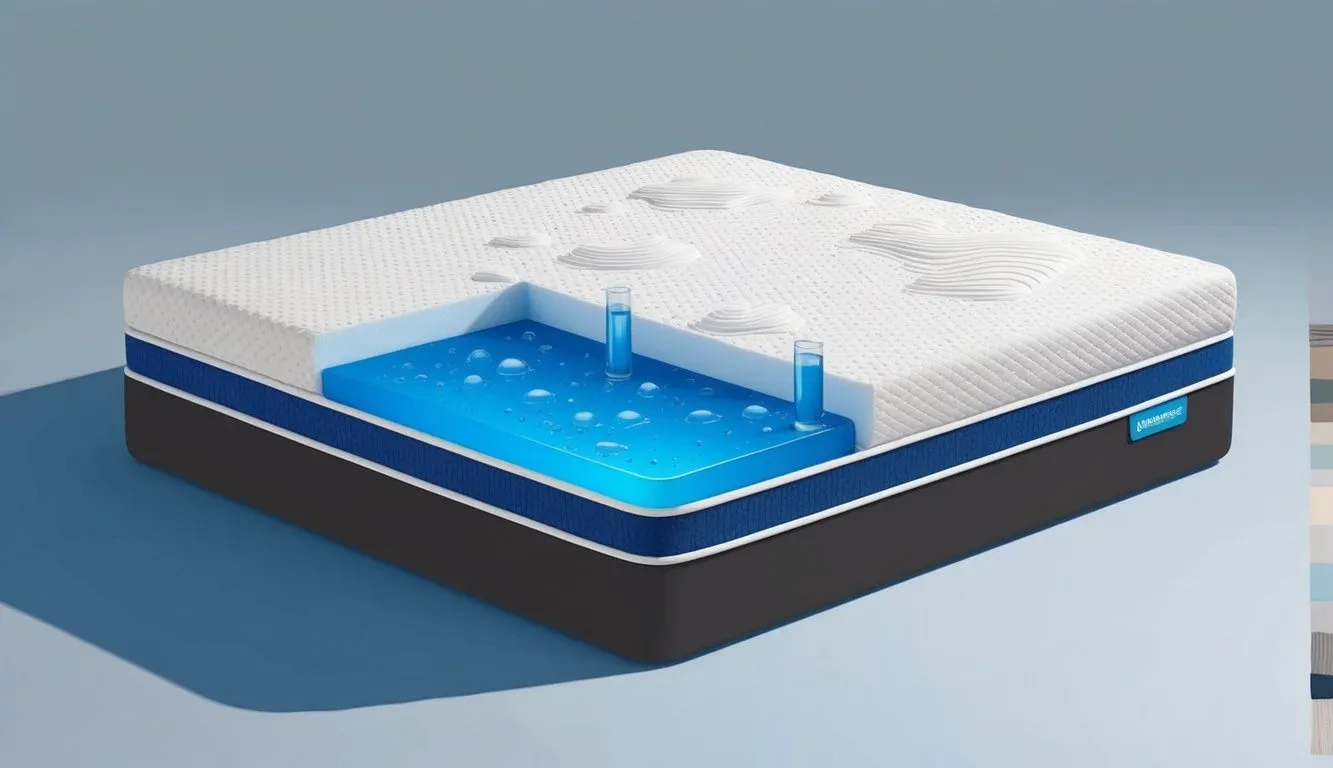
Modern orthopedic mattresses include specialized features beyond basic support. These technologies enhance comfort, regulate temperature, and improve sleep quality for those with joint and back pain.
Cooling Technologies for Better Sleep
Overheating during sleep can worsen discomfort for orthopedic patients. Many mattresses now include cooling technologies to maintain optimal sleep temperatures.
Gel-infused memory foam helps dissipate body heat rather than trapping it against the body. This technology pulls warmth away from the sleeper, preventing the hot feeling common with traditional memory foam.
Phase-change materials (PCMs) actively regulate temperature by absorbing excess heat when you’re too warm and releasing it when you cool down. These materials maintain a consistent sleep temperature throughout the night.
Some mattresses feature cooling covers made with specialized fabrics like:
- Tencel (derived from eucalyptus)
- Bamboo blends
- Copper-infused textiles
These breathable materials enhance airflow through the mattress surface, preventing the buildup of heat and moisture.
Motion Isolation for Uninterrupted Sleep
Motion isolation prevents movement from transferring across the mattress surface. This feature is crucial for those sharing a bed, especially when one person has orthopedic issues requiring undisturbed sleep.
Memory foam excels at motion isolation, absorbing movement at its source rather than letting it ripple across the mattress. This means one person can change positions without disturbing their partner.
Pocketed coil systems also provide excellent motion isolation. Each spring is individually wrapped in fabric, allowing them to move independently. This design minimizes motion transfer while maintaining responsive support.
Some hybrid mattresses combine both technologies—memory foam layers on top absorb initial movement, while pocketed coils below prevent deeper vibrations from transferring.
Edge Support and Responsiveness
Strong edge support extends the usable sleep surface and helps with getting in and out of bed—particularly important for those with mobility issues or joint pain.
Reinforced perimeters provide structure around the mattress edges through:
- Extra-firm foam borders
- Stronger coils along mattress edges
- Specialized support systems
Good responsiveness means the mattress quickly adjusts to movement and position changes. This helps prevent the “stuck” feeling some orthopedic mattresses create.
Latex layers and responsive foams offer the pressure relief of memory foam but bounce back more quickly. This balanced approach supports easy movement for those with joint pain.
Many orthopedic mattresses now use zoned support systems that combine firm edges with responsive midsections, creating an ideal balance of stability and adaptability.
Practical Information for Shoppers

Shopping for an orthopedic mattress requires understanding key features and policies that protect your investment. These practical considerations will help you make an informed decision that suits your specific health needs and budget.
Understanding Mattress Firmness and Support
Mattress firmness ranges on a scale from 1-10, with most orthopedic options falling between 6-8 (medium-firm to firm). This range typically provides the balanced support needed for proper spinal alignment.
For back pain sufferers, medium-firm mattresses (6-7 firmness) often offer the best combination of support and pressure relief. Side sleepers may prefer slightly softer options (5-6) that cushion shoulders and hips.
Support comes from the core materials. Look for:
- High-density foam: 1.7+ lbs/cubic foot for durability
- Pocketed coils: 800+ count for targeted support
- Zoned design: Firmer under hips, softer under shoulders
The mattress should maintain proper spine alignment regardless of sleeping position. Weight is a factor too – heavier individuals (230+ lbs) often need firmer mattresses with reinforced support structures.
Examining Trial Periods and Return Policies
Most quality orthopedic mattress companies offer sleep trials ranging from 100-365 nights. This extended testing period allows your body to fully adjust to the new support system.
Typical sleep trial features:
- 30-day minimum break-in period before returns
- Free return shipping or pickup
- Full refund policy without restocking fees
Read the fine print about return logistics. Some companies arrange donation or pickup, while others require you to box and ship the mattress back.
Many online retailers offer free shipping, especially for orders over a certain amount. White-glove delivery services typically cost $100-$150 extra but include setup and old mattress removal.
Customer reviews often highlight the ease or difficulty of the return process, providing valuable insights into company practices. Check these testimonials before purchasing.
Orthopedic mattresses typically come with warranties ranging from 10-25 years. These warranties usually cover manufacturing defects and premature sagging beyond a certain depth (typically 1-1.5 inches).
What quality warranties include:
- Non-prorated coverage for the first 10 years
- Clear terms about what constitutes a defect
- Reasonable sagging thresholds
- Coverage for materials and workmanship
Customer service quality varies significantly between brands. Research response times and resolution rates through third-party review sites like Better Business Bureau or Trustpilot.
Keep all purchase documentation and follow care instructions precisely. Using improper foundations or removing mattress tags can void warranties. Taking photos of your new mattress upon arrival can also help document its original condition should warranty claims become necessary.
Enhancing Your Sleep Experience
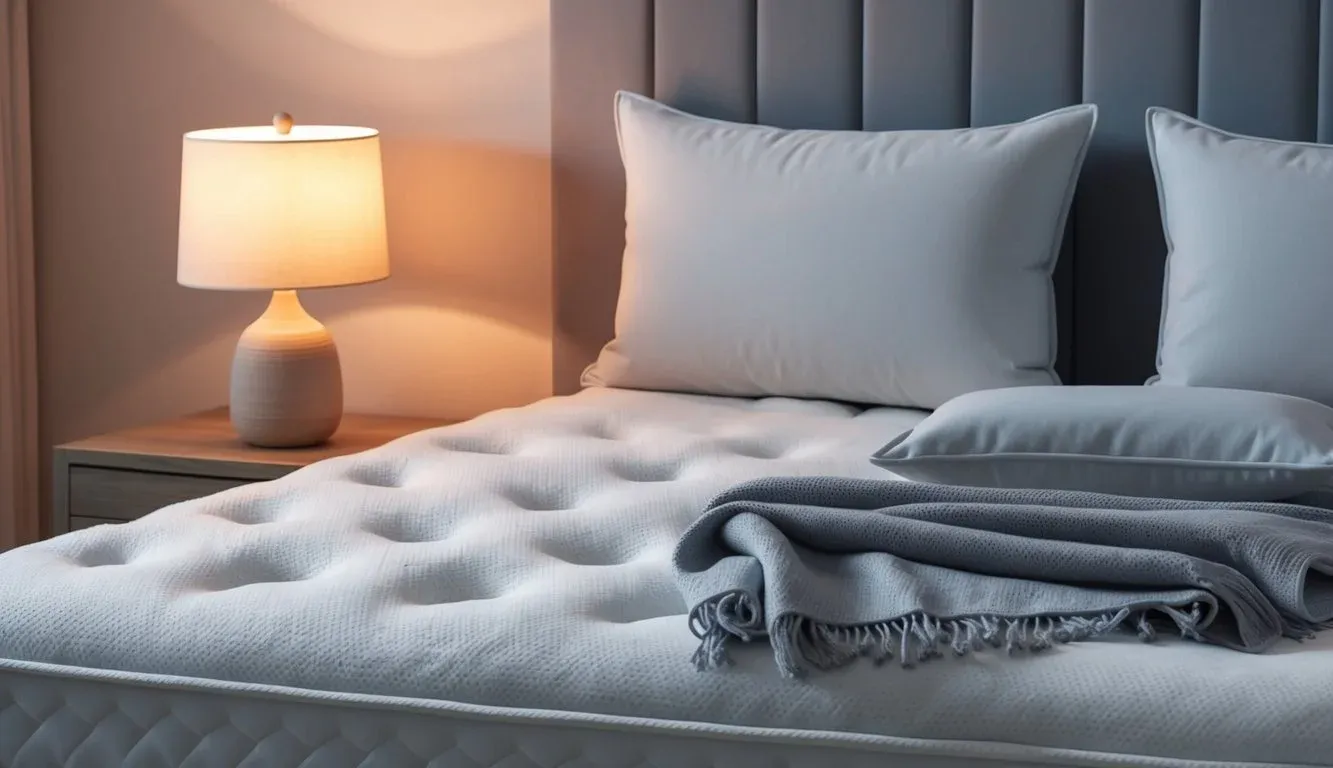
An orthopedic mattress is just the beginning of your journey to better sleep. The right accessories, bed base, and maintenance routine can significantly improve comfort and extend the life of your investment.
Choosing the Right Bedding Accessories
The perfect bedding complements your orthopedic mattress for optimal sleep quality. Pillows with proper neck support maintain spinal alignment throughout the night. Memory foam pillows often work well with orthopedic mattresses, creating a cohesive sleep surface.
Consider bedding materials carefully. Organic cotton sheets allow your skin to breathe while sleeping on high-density memory foam mattresses that can retain heat. Mattress toppers can add an extra layer of comfort foam for those who need additional cushioning.
Temperature-regulating comforters and moisture-wicking materials help maintain an ideal sleep environment. Many luxury mattress owners pair their beds with weighted blankets to reduce anxiety and enhance relaxation.
Adjustable Beds and Bed Bases
Adjustable beds transform how you use your orthopedic mattress. These frames let you elevate your head or feet, providing targeted relief for various conditions:
- Back pain sufferers can find the perfect position for lumbar support
- Snorers may benefit from slight head elevation
- People with circulation issues can raise their legs as needed
Solid foundations ensure proper alignment of your mattress’s pocketed coils and support layers. Platform beds offer firm, even support ideal for orthopedic mattresses with minimal motion transfer.
Split king adjustable bases allow couples to customize their positions independently. Many modern bases include massage features, USB ports, and programmable position settings for maximum comfort.
Maximizing Longevity and Maintaining a Mattress
Regular maintenance extends the life of your orthopedic mattress investment. Rotate your mattress every 3-6 months to prevent uneven wear and body impressions, especially for beds with high-density memory foam.
Use a mattress protector to guard against spills, dust mites, and allergens. Waterproof options provide complete protection without sacrificing breathability.
Vacuum your mattress quarterly using an upholstery attachment. Spot clean stains immediately with mild soap and water, avoiding harsh chemicals that break down foam materials.
Proper support underneath prevents sagging and maintains the integrity of pocketed coils. Follow the manufacturer’s guidelines about compatible foundations to prevent voiding your warranty.
Making an Informed Decision

Choosing the right orthopedic mattress requires research and careful consideration of several factors. The best choice balances expert recommendations with your unique needs and budget constraints.
Analyzing Mattress Reviews and Comparisons
Mattress reviews provide valuable insights from both experts and customers. Look for reviews that specifically mention support for back pain and spine alignment. These often highlight how well a medium-firm mattress maintains proper sleep posture.
Pay attention to comments about durability and performance over time. Many orthopedic mattresses perform well initially but may lose support after months of use.
Compare similar models across different brands. This helps identify which mattresses consistently receive positive feedback for orthopedic benefits.
Third-party review sites often offer more objective assessments than manufacturer websites. They typically evaluate factors like:
- Support level
- Pressure relief
- Motion isolation
- Edge support
- Quality materials
Considering Personal Preference and Sleep Habits
Sleep position significantly impacts which orthopedic mattress will work best. Side sleepers typically need more cushioning for shoulders and hips, while back sleepers benefit from firmer support.
Body weight also matters. Heavier individuals generally need firmer mattresses with denser support layers to prevent sinking.
Testing mattresses in person remains valuable despite online shopping convenience. Many companies offer sleep trials ranging from 30-365 days.
Personal health conditions like arthritis or herniated discs may require specific features. Consult with healthcare providers about recommended mattress specifications if you have diagnosed back problems.
Temperature preference should not be overlooked. Some orthopedic materials like memory foam retain heat, while others offer cooling properties.
Evaluating Value and Long-Term Benefits
Quality orthopedic mattresses represent a significant investment. A higher initial cost often translates to better durability and support over time.
Calculate the cost per year by dividing the price by the expected lifespan. A $1,200 mattress lasting 10 years costs $120 annually—often less than treatments for pain from poor sleep.
Warranty terms reveal manufacturer confidence in their product. Look for at least 10 years of coverage for premium orthopedic models.
Materials used directly impact longevity. High-density foams and tempered steel coils generally last longer than lower-quality alternatives.
Consider these additional value factors:
- Delivery and setup services
- Old mattress removal
- Return policies and fees
- Financing options
Frequently Asked Questions

Orthopedic mattresses offer specific benefits for various sleep needs. The right mattress depends on your body type, sleep position, and specific pain concerns.
How do I choose an orthopedic mattress for chronic back pain relief?
Look for medium-firm to firm support that maintains proper spinal alignment. Memory foam or hybrid mattresses with reinforced lumbar support often work best for chronic back pain.
The mattress should contour to your body while preventing excessive sinking. Many orthopedic options feature zoned support systems that provide extra firmness under the heaviest parts of your body.
Test mattresses for at least 15 minutes in your typical sleep position before purchasing. Many companies now offer 100-night sleep trials to ensure the mattress truly helps your back pain.
What are the recommended mattresses for side sleepers with joint pain?
Side sleepers with joint pain benefit from slightly softer orthopedic mattresses with pressure relief. Memory foam or latex mattresses rated medium to medium-soft (5-6 on the firmness scale) typically work best.
These mattresses should cushion the shoulders and hips while still supporting the spine. Look for models with extra padding in the comfort layers.
Mattresses with targeted pressure relief technology can significantly reduce joint pain by distributing weight evenly. Some brands offer special shoulder cutout zones specifically designed for side sleepers.
Which king-size orthopedic mattress is best suited for orthopedic support?
The Saatva Classic in king size offers excellent orthopedic support with its dual-coil design and lumbar zone enhancement. Tempur-Pedic ProAdapt king mattresses provide exceptional pressure relief with adaptive foam technology.
Winkbed’s king-size options feature zoned support that maintains proper spinal alignment. For couples with different support needs, Sleep Number’s king-size adjustable firmness models allow customization on each side.
King-size hybrid mattresses often provide the best combination of support and comfort for larger sleep surfaces. Look for reinforced edges to maximize the usable sleep surface.
What options are available for an affordable mattress that alleviates back pain?
Nectar’s memory foam mattress provides good pressure relief and support at a mid-range price point. The Dreamfoam Bedding Elements Latex mattress offers natural latex support at approximately half the cost of premium brands.
Amazon’s Rivet mattress combines memory foam with pocket coils at a budget-friendly price. Several online direct-to-consumer brands like Tuft & Needle offer quality orthopedic support without showroom markups.
Watch for holiday sales, when prices can drop 10-30% on quality orthopedic mattresses. Many affordable options come with the same lengthy warranties and sleep trials as premium models.
Can you list top-rated orthopedic mattress brands for different weights and sleep positions?
For lightweight sleepers (under 130 lbs), Brooklyn Bedding’s Signature Hybrid and Casper Original provide balanced support. Average-weight individuals (130-230 lbs) often prefer Saatva Classic or Helix Midnight mattresses.
Heavier individuals (over 230 lbs) typically need the WinkBed Plus or Purple Hybrid Premier for enhanced support. Back sleepers generally rate Loom & Leaf and Avocado Green mattresses highly for proper spine alignment.
Stomach sleepers require firmer options like Plank by Brooklyn Bedding. Combination sleepers who change positions often prefer responsive latex hybrids like the EcoCloud by WinkBeds.
What type of mattress construction is ideal for reducing both back and shoulder pain?
Hybrid mattresses with zoned support systems often work best for addressing both back and shoulder pain. These combine supportive coils with pressure-relieving comfort layers.
Look for designs with softer foam near the shoulders and firmer support in the lumbar region. Memory foam or latex top layers at least 2-3 inches thick provide necessary cushioning for sensitive shoulders.
Adjustable bases paired with compatible mattresses allow position changes that can further reduce both back and shoulder pressure points. Some advanced models feature targeted relief zones specifically engineered for these common pain areas.